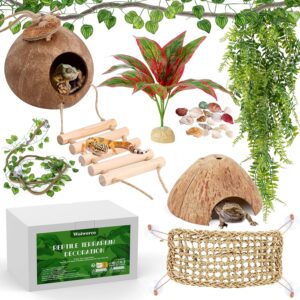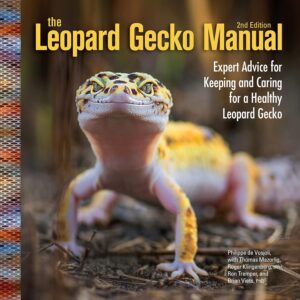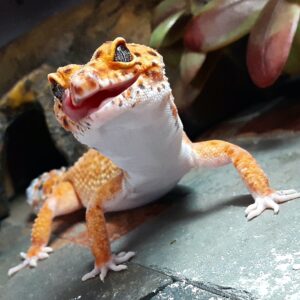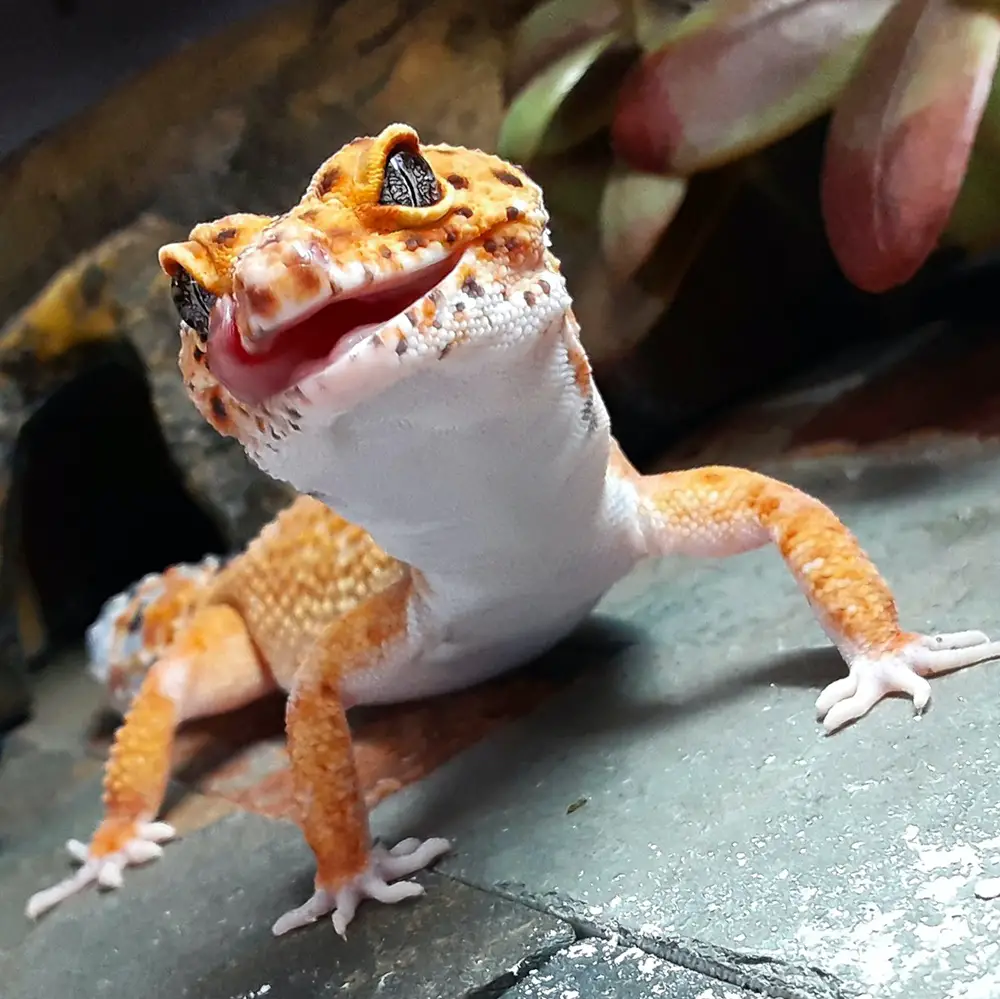Leopard gecko tail rot
Brief Overview of Leopard Geckos as Popular Reptile Pets
A Majestic Species: The Leopard Gecko
Leopard gecko tail rot: Leopard geckos (Eublepharis macularius) are extraordinary creatures native to the arid regions of Afghanistan, Iran, and Pakistan. Renowned for their mesmerizing beauty and calm temperament, they have become one of the most sought-after reptile pets worldwide. With their striking patterned skin resembling their namesake big cats, these small lizards have captured the hearts of reptile enthusiasts and beginners alike.
A Perfect Pet Choice: The Appeal of Leopard Geckos
What makes leopard geckos so captivating as pets is not only their exquisite appearance but also their manageable size and low maintenance requirements. Unlike other reptiles, leopard geckos do not require UVB lighting as they are crepuscular creatures, meaning they are primarily active during dawn and dusk. This unique trait allows for a simplified setup in terms of lighting requirements compared to many other reptiles.
Furthermore, leopard geckos possess a docile nature that makes them quite amenable to handling. They rarely exhibit aggressive behaviors towards humans, which makes them an excellent choice for pet owners seeking a companionable reptile that can be interacted with regularly.
Introduction to the Topic of Leopard Gecko Tail Rot and Its Significance
Unraveling the Mysterious Tail Rot Phenomenon
While leopard geckos generally thrive in captivity when provided with ideal conditions, there exists a potential health issue that warrants attention: tail rot. Tail rot refers to the condition where the tail’s tissues deteriorate due to bacterial or fungal infections. Initially appearing as discoloration or swelling at the tail’s tip, it can progress into tissue necrosis if left untreated.
The Significance of Tail Rot in Leopard Geckos
 Tail rot is a matter of utmost importance for leopard gecko owners and enthusiasts due to several reasons. Firstly, the tail serves as a vital body part for these reptiles, playing a crucial role in energy storage and balance. A healthy tail reflects the overall well-being of the gecko.
Tail rot is a matter of utmost importance for leopard gecko owners and enthusiasts due to several reasons. Firstly, the tail serves as a vital body part for these reptiles, playing a crucial role in energy storage and balance. A healthy tail reflects the overall well-being of the gecko.
Therefore, any signs of tail rot should be addressed promptly to prevent further complications. Moreover, tail rot can negatively impact a leopard gecko’s quality of life.
The pain and discomfort it causes can lead to decreased mobility and appetite, ultimately affecting the gecko’s overall health and vitality. Recognizing the significance of this condition emphasizes the need for proper knowledge about its causes, prevention measures, and treatment options.
As responsible pet owners or enthusiasts interested in these captivating creatures, understanding leopard gecko tail rot becomes paramount in ensuring their long-term welfare and providing them with optimal care. With this awareness established, we delve further into exploring the causes of tail rot, identifying its symptoms, discussing preventive measures to mitigate its occurrence, and examining effective treatment options for this concerning ailment.
Understanding Leopard Gecko Tail Rot
Definition and Causes of Tail Rot in Leopard Geckos
Tail rot, also known as tail necrosis or tail rot syndrome, is a distressing condition that affects leopard geckos. It is characterized by the gradual decay and death of the tail tissue, usually due to bacterial or fungal infections.
This condition often occurs when there is a break in the skin or an open wound on the tail, allowing pathogens to enter and cause tissue necrosis. Bacterial infections are one of the primary culprits behind leopard gecko tail rot.
Pathogens such as Pseudomonas aeruginosa, Aeromonas hydrophila, and Proteus mirabilis can thrive in warm and humid environments, commonly found within reptile enclosures. These bacteria can penetrate through even small injuries on the tail, establishing an infection that leads to tissue decay.
Fungal infections are another significant cause of tail rot in leopard geckos. The fungus most commonly associated with this condition is Fusarium solani.
Fungi tend to grow in damp environments with poor ventilation or improper husbandry practices. When these opportunistic fungi infect a compromised tail, they begin breaking down tissues through enzymatic processes, resulting in necrosis.
Common Pathogens Responsible for Tail Rot
Several pathogens have been identified as common culprits responsible for causing leopard gecko tail rot. Among them are bacterial species such as Pseudomonas aeruginosa and Aeromonas hydrophila. Pseudomonas aeruginosa is particularly notorious for its ability to produce enzymes that break down tissues and evade the immune system’s defenses.
Additionally, Proteus mirabilis is another bacterium commonly associated with leopard gecko tail rot. It produces urease enzymes that create an alkaline environment around infected areas by breaking down urea into ammonia, further contributing to tissue breakdown.
Fungal infections caused by Fusarium solani are also prevalent in leopard gecko tail rot cases. Fusarium spp.
are filamentous fungi known for their ability to rapidly colonize and invade weakened or damaged tissues. They produce various toxic metabolites that contribute to tissue decay and necrosis.
Identification and Symptoms of Tail Rot in Leopard Geckos
 Detecting tail rot in leopard geckos is crucial for timely intervention and effective treatment. Early identification of symptoms can prevent the spread of infection and potentially save the affected gecko’s life. One common sign of tail rot is discoloration, often manifesting as a darkening or blackening of the tail tip.
Detecting tail rot in leopard geckos is crucial for timely intervention and effective treatment. Early identification of symptoms can prevent the spread of infection and potentially save the affected gecko’s life. One common sign of tail rot is discoloration, often manifesting as a darkening or blackening of the tail tip.
This discoloration gradually spreads towards the base of the tail as the infection progresses. Additionally, swelling may occur around the affected area due to inflammation caused by bacterial or fungal activity.
Another key symptom is a foul odor emanating from the infected tail region. The decaying tissue releases unpleasant odorous compounds as a result of bacterial or fungal metabolism.
This distinctive smell can be an unmistakable indication that tail rot is present. Promptly identifying these symptoms enables reptile enthusiasts and veterinarians alike to intervene with appropriate treatment measures, preventing further deterioration of the tail tissue and potential systemic infections that could endanger the overall health of these majestic creatures.
Risk Factors and Prevention Measures
Environmental factors contributing to tail rot development
Leopard geckos require specific environmental conditions to thrive, and any deviation from these requirements can increase the risk of tail rot development. One significant factor is inadequate humidity levels within the enclosure.
Leopard geckos originate from arid regions, and low humidity can lead to dryness and shedding issues, making the skin susceptible to infections. A lack of moisture in the environment can cause the tail tip to become dry, brittle, and more prone to injuries that can subsequently become infected.
Another critical environmental factor that contributes to tail rot is poor hygiene practices in the enclosure. Insufficient cleaning and maintenance routines create an ideal breeding ground for bacteria that may infect a gecko’s tail.
Accrued waste, feces, shed skin, or uneaten food left inside the habitat foster bacterial growth. Neglecting regular cleaning not only compromises the overall cleanliness of the enclosure but also increases the risk of pathogens thriving and potentially causing tail rot.
Proper husbandry techniques for preventing tail rot
 Maintaining appropriate humidity levels within the leopard gecko’s enclosure is crucial in preventing tail rot. The optimal humidity range for leopard geckos generally falls between 40% – 50%.
Maintaining appropriate humidity levels within the leopard gecko’s enclosure is crucial in preventing tail rot. The optimal humidity range for leopard geckos generally falls between 40% – 50%.
This level ensures their skin remains adequately hydrated while avoiding excessive moisture that could lead to other health issues. To achieve this range, it is essential to provide proper ventilation along with implementing measures such as misting or using a reptile-specific humidifier.
In cases where additional humidity is necessary due to environmental conditions or health concerns (such as shedding difficulties), utilizing moist hides can be beneficial. These hides are designated areas within the enclosure where ample moisture is present, allowing leopard geckos to seek higher humidity when needed.
They are typically created by placing damp sphagnum moss or paper towels inside hide boxes, providing a localized humid microenvironment. Regular cleaning and disinfection procedures are vital in preventing tail rot.
Enclosure cleaning should be performed using reptile-safe cleaning agents, such as diluted chlorhexidine or specialized reptile cage cleaners. Thoroughly disinfecting the habitat helps eliminate potential pathogens and reduces the risk of bacterial growth.
The frequency of enclosure cleaning depends on individual needs, but as a general guideline, removing waste and spot-cleaning should be done daily or as required, while deep cleaning with disinfectants can be done weekly or bi-weekly to maintain optimal hygiene levels. By understanding and addressing these risk factors through appropriate husbandry techniques, leopard gecko owners can significantly reduce the incidence of tail rot in their beloved pets.

Treatment Options for Leopard Gecko Tail Rot
Mild cases: Home remedies and conservative management
In cases where leopard gecko tail rot is detected in the early stages, home remedies and conservative management techniques can often be effective in halting its progression. One commonly recommended approach is to administer tail baths using antiseptic solutions such as diluted Betadine or chlorhexidine. These solutions help disinfect the affected area, promoting healing and preventing further infection.
To perform a tail bath, prepare a shallow container with enough solution to fully submerge the affected portion of the tail, ensuring that it is diluted according to the product instructions. Gently place the gecko’s tail into the solution for a few minutes each day or as recommended by a reptile veterinarian.
Application of topical ointments containing antibacterial or antifungal agents
Another effective treatment method for mild cases of leopard gecko tail rot involves applying topical ointments that contain antibacterial or antifungal agents directly onto the affected area. These medications help combat the underlying infection and promote healing. It is crucial to choose ointments specifically formulated for reptiles and avoid using human products that may be harmful to them.
Before application, carefully clean the infected area with a sterile gauze pad soaked in warm water or an appropriate reptile-safe wound cleanser to remove any debris. Follow this by gently applying a thin layer of the chosen ointment over the affected area, taking care not to cause further damage.
Proper wound care techniques
Alongside home remedies and medication application, proper wound care techniques play a vital role in treating leopard gecko tail rot effectively. Maintaining optimal hygiene around your gecko’s enclosure is crucial during this time. Ensure that their living environment remains clean and free from any potential contaminants.
Regularly clean the enclosure, removing any waste, uneaten food, or shedding skin promptly. This helps prevent bacteria and fungi from proliferating.
Additionally, it is essential to monitor your gecko’s behavior and feeding habits closely to ensure they are receiving adequate nutrition and recovering well. By providing a clean and stress-free environment while following appropriate wound care techniques, you can help support the healing process for your leopard gecko.
TO sum up leopard gecko tail rot
Leopard gecko tail rot can be a concerning condition for reptile enthusiasts, but with early detection and proper treatment, the prognosis is generally favorable. Mild cases of tail rot can often be managed effectively through home remedies such as tail baths with antiseptic solutions like diluted Betadine or chlorhexidine and the application of topical ointments containing antibacterial or antifungal agents. Combined with proper wound care techniques, these treatment options provide an excellent chance for recovery in most cases.
However, it is crucial to seek veterinary assistance if the condition worsens or persists despite these efforts. By prioritizing your leopard gecko’s well-being through proactive healthcare measures and attentive monitoring, you can help them overcome tail rot successfully and ensure a healthy life filled with joyous moments together.


